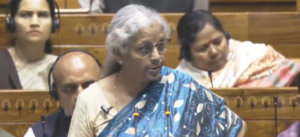Ten central trade unions will observe a nationwide general strike on 26 November, with an expected participation of 25 crore workers across the country, PTI reported.
At the meeting of the Joint Platform of Central Trade Unions (CTUs) and Sectoral Independent Federations and Associations held on 16 November, the unions expressed satisfaction over the tremendous response being received from workers and the people at large throughout the country to the ongoing campaign for the countrywide general strike.
The forum consists of Indian National Trade Union Congress (INTUC), All India Trade Union Congress (AITUC), Hind Mazdoor Sabha (HMS), Centre of Indian Trade Unions (CITU), All India United Trade Union Centre (AIUTUC), Trade Union Co-ordination Centre (TUCC), Self-Employed Women’s Association (SEWA), All India Central Council of Trade Unions (AICCTU), Labour Progressive Federation (LPF) and United Trade Union Congress (UTUC).
The preparatory campaign for the general strike against “the anti-people, anti-worker, anti-national and destructive policies of the BJP government led by Prime Minister Narendra Modi has been going on with great enthusiasm all over the country”, a statement issued after the meeting said.
Joint conventions and posters, leaflets published jointly as well as independently by the central trade unions and their affiliated trade unions state, district and local levels as well as at the sectoral level will be part of the strike. The strike notices have been served, it said, adding that in addition to workers, people from all walks of life and all sections of the society, including students, youth, women and peasants have been coming forward extending their whole-hearted support to the strike call.
The Independent Sectoral Federations and Associations in the central and state government employees and in the public sector enterprises have served the strike notice in most of the places, similarly the industrial units in the private sector, big and small, also have submitted notices to this effect in most part of the country, the joint statement said. The scheme workers, domestic workers, construction workers, beedi workers, hawkers, vendors, agricultural workers, self employed in rural and urban India have decided to come on streets for ‘chakka jam’, it further added.
Auto and taxi drivers have also decided to keep off the roads in many states. The federations of railway and defense employees have decided for large mobilisation on the day to express their solidarity to this strike action and the demands of the unions, the statement said.
Meanwhile, the All India Power Engineers Federation (AIPEF) has also stated that power engineers across the country will protest against the privatisation policies of the central government. The AIPEF is demanding to scrap of Electricity (Amendment) Bill, 2020 and standard bidding document (SBD) for the privatisation of electricity.
The All India Bank Employees’ Association (AIBEA) said it would be joining the one-day nationwide strike. “Lok Sabha in its recently held session has passed three new labour enactments by dismantling existing 27 enactments in the name of ”Ease of Business”, which are purely in the interest of corporates. In the process, 75 percent of workers are being pushed out of the orbits of labour laws since they will have no legal protection under the new enactment,” the AIBEA said in a release.
The union said bank employees will also focus on their demands such as opposition to bank privatisation, opposition to outsourcing and contract system, adequate recruitment, stern action against big corporate defaulters, increase in rate of interest on bank deposits and reduction in service charges.
In a joint statement released by the All India Federation of University and College Teachers’ Organisation (AIFUCTO), Maharashtra Federation of University and College Teachers’ Organisation (MFUCTO) Bombay University and College Teachers’ Union (BUCTU) as well as the Shikshak Bharati have expressed their solidarity with the all India strike.
Members of Shikshak Bharati and BUCTU will hold a protest demonstration at the gate of Bombay University’s Kalina campus on 26 November. “This strike is against the devastating health and economic crisis unleashed by COVID-19 and the lockdown on the working people of the country. This has been further aggravated by a series of anti-people legislations on agriculture and labour code enacted by the central government. Along with these measures, the National Education Policy (NEP) imposed on the nation during the pandemic will further cause irreparable harm to the equity and access of education,” said the joint statement.
In what is going to make this strike historic, farmers organisations from across the country have also given the call of ‘Parliament Chalo’ march on 26 and 27 November against the three farm laws. The All India Kisan Sangharsh Coordination Committee (AIKSCC), which is spearheading this march, has also extended support to the general strike of workers.
On November 19, an unprecedented meeting of the Joint Platform of Trade Unions and the umbrella forum of farmers’ organizations (that has over 300 constituent organizations) took place to chalk out the strategy for what could be a watershed moment in India’s long history of peoples’ struggles. Never before has there been such close coordination between the most oppressed classes, the farmers and agricultural laborers, converging with industrial workers and employees in public and private sectors.
This may lead to not only the general strike of November 26, one of the biggest and most effective ones but the farmers’ march to Delhi, planned to coincide with the strike would take this protest into hitherto uncharted territory.
Farmers Set to Occupy Roads Leading to Delhi
According to the All India Kisan Sabha (AIKS) [All India Farmers’ Organization], farmers from neighboring States are planning to move to Delhi from different points and will be coming prepared with food and bedding for spending as much time as the government forces them to.
“Over 200,000 farmers from the States of Punjab, Haryana, Uttar Pradesh, Rajasthan and Madhya Pradesh will be moving to Delhi to participate in a massive rally, demanding withdrawal of the three agriculture related laws, and also, implementation of Swaminathan Commission recommendations on Minimum Support Price, and waiving of all debt. If the government tries to stop them en route, all roads to the capital will be jammed indefinitely,” said Hannan Mollah, general secretary of AIKS.
“The time to protest is over because the Modi government is not listening – the time has come to resist on the streets,” Mollah asserted, reflecting the mood of farmers.
Elsewhere in the country, farmers will join workers and employees on strike in a coordinated action that has been fine-tuned over the past two months. Farmers will hold massive demonstrations at state Legislative Assemblies or Raj Bhawans [residence of the State governors], and even at district administration headquarters throughout the country. Coupled with the workers’ strike, this is likely to paralyze the countryside to varying degrees across India.
26th Strike continues wave of industrial protests
Early in October, a national convention organized by the Joint Platform had called for the strike, the first to be held during the pandemic, and the second such strike this year. The first one was observed on January 8, and had reported participation of 20 million workers, making it the biggest strike in history.
Since the convention, which was attended online by nearly 100,000 workers, the central trade unions and dozens of independent federations have been campaigning across the country, in all industrial areas, big and small. Major sectors of the economy, including steel, coal, port and dock, telecom, plantation, transport, construction, banking, insurance, power are likely to be affected by the strike. In many other sectors, like the railways and among government employees (both, Central and states) protests will be held.
The strike comes in continuation of a series of industrial actions over the past several years led by the joint platform, which included protests and/or strikes by coal workers, bank and insurance employees, defense production employees, telecom (BSNL) employees, oil and gas sector employees, transport workers, etc. Besides these, all-India level strikes have also been held periodically.
These ever-broadening protests by workers and employees were against policies of refusal to increase wages, increasing contractualization of workforce, dilution and dismantling of protective labor laws, price rise and unemployment, stopping the sale of country’s resources (both natural and industrial) to domestic or foreign capital among other issues.
Since March this year, after the COVID-19 pandemic started sweeping across the country and an ill-conceived and mismanaged lockdown devastated the lives of poor, workers and employees have been fighting for income support, end to retrenchment and closures, expanding the public distribution system, etc. As a part of their charter of demands, the workers are demanding a decent relief package from the government, including cash transfer of Rs 7,500 per month for all non-income tax paying families and 10 kg free ration per person per month to all needy. The unions have also demanded for expansion of MGNREGA (rural employment guarantee scheme) to provide 200 days’ work in a year in rural areas at enhanced wages and also extension of the employment guarantee to urban areas.
Meanwhile, farmers and agricultural laborers in India too have been on the warpath because of increasing economic ruin, low returns to their produce, stagnant wages, forcible land acquisition, and increasing dominance of big traders and corporate entities over agrarian production, trade and produce pricing.
Both the streams were organically drawn closer over time, both because they represented different exploited sections in India, and also because both were suffering at the hands of the incumbent Modi government.
It is this unity that will be exhibited in the coming strike/protest on November 26-27. For the workers – whether in the organized or unorganized sectors – and employees, as for the small, marginal and middle level farmers (making up 90% of Indian farmers) and the vast army of rural laborers, this is a ‘do or die’ battle. That is why the wave of energy and enthusiasm being reported from all corners of the country as the strike/protest days draw near.
(Article compiled by us based on reports in Firstpost.com and Newsclick.)




